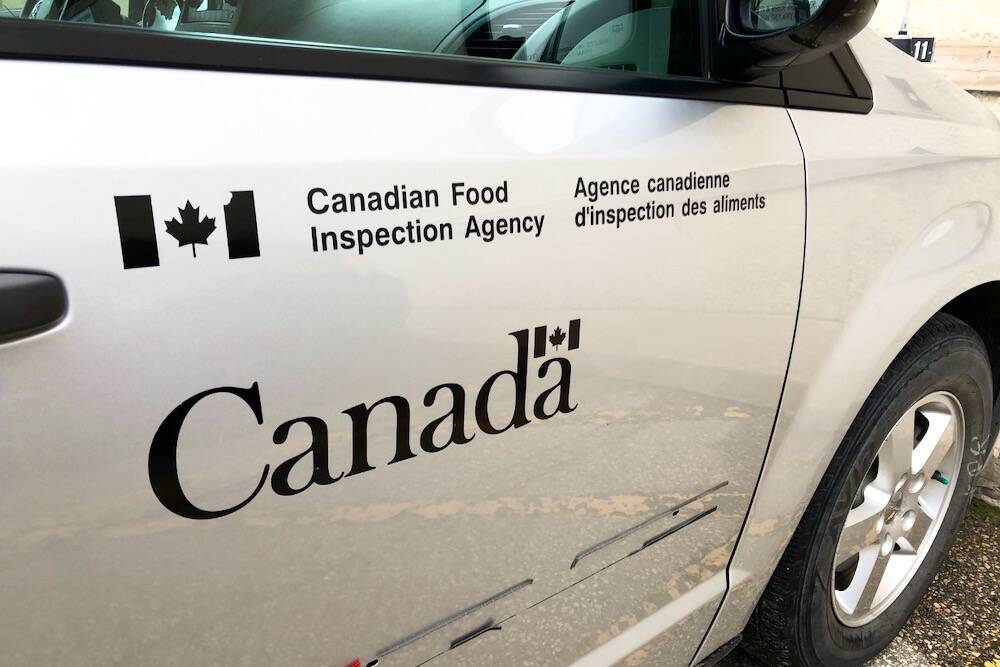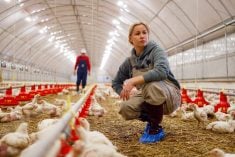The country’s agriculture ministers had good things to say about the industry last week, but a report released this spring shows consumers aren’t as confident.
Federal agriculture minister Gerry Ritz and his provincial counterparts released a statement following their meeting in Winnipeg praising federal and regional efforts to foster innovation and create opportunities in Canada’s agriculture sector, which contributed $106.9 billion to the nation’s gross domestic product last year.
“We continue to work with industry to build a modern, science-based environment that will make Canada a destination of choice for R & D and value-added processing investment,” Ritz said.
Read Also

B.C. ostriches culled, CFIA confirms
Ostriches on an embattled Edgewood, B.C. farm have been culled after a prolonged legal battle, the Canadian Food Inspection Agency has confirmed.
“By focusing on access to new growth markets and emerging opportunities, we will ensure that the sector continues to serve as an engine of economic growth for the Canadian economy.”
Worthy goals, no doubt, but a report released in March said consumers aren’t as enthusiastic or hopeful as Ritz regarding the state of Canada’s food sector.
The Strategic Counsel’s report about public perceptions of farming and food production was conducted for Agriculture Canada.
The market research firm collected information from focus groups and concluded that a large number of consumers feel Canada’s agriculture and food industry is not thriving.
“Despite the fact that the sector continues to modernize, diversify and innovate, recent surveys of the Canadian public have underscored a number of misperceptions about the agricultural sector and a relatively pessimistic public view with respect to its future outlook,” the report noted.
“Some participants’ views … were based solely on the fact that the produce and goods they purchase in grocery stores on a regular basis seem to be increasingly made or shipped from outside of Canada. This leaves them with a sense that the sector must be shrinking.”
Focus group participants were not aware of food production innovation in Canada and assumed “agriculture hadn’t changed much in the last 10 to 20 years.”
The report emphasized the importance of telling the story of modern agriculture to the public and how critical food production is to Canada’s economy.
However, David McInnes, president of the Canadian Agri-Food Policy Institute (CAPI), said farmers and the agriculture industry can’t just focus on “pushing” information to Canadians.
“It’s also about the consumer pull for Canadian food,” McInnes said.
“In other words, what is going to drive consumers here and abroad to look to Canadian food … and want to purchase Canadian because they have confidence in how (Canadian) food is grown.”
CAPI issued a series of reports this year examining the state of Canada’s processed food sector. The country’s trade deficit in secondary processed food hit $6.8 billion in 2013, up dramatically from a decade ago.
McInnes said Canada’s agri-food industry has an opportunity to reverse the trend if it can differentiate Canadian food from those produced by competitors.
McInnes said more and more citizens want to know how their food is produced and if it is good for them.
“I think Canada is well positioned to respond to those increasingly important attributes,” he said.
“Price is always a key factor for many consumers … but even as we’re seeing in discount stores and private label products, origin and the quality attributes around how food is produced (is) becoming mainstream very, very quickly.”
North American consumers are now bombarded with a variety of catch phrases on packages and food containers at the grocery store, including gluten-free, natural and sustainably sourced.
McInnes said retailers will always use such slogans to take advantage of consumer desires, but what’s important is the system that supports those claims.
“When we export or serve our own Canadian marketplace, we want consumers here or abroad to know what stands behind their food and the protocols that are promoted are genuine.”
As an example of an opportunity, McInnes said many Asian consumers don’t trust the safety of their food or their government’s willingness to regulate the food system.
Canada might be able to brand itself as a nation that produces trustworthy food, but it will require a co-ordinated effort to support such an identity.
“Trust requires metrics, and trust requires transparency,” McInnes said.
“(A) regulatory structure that helps to ensure confidence is incredibly important.”















